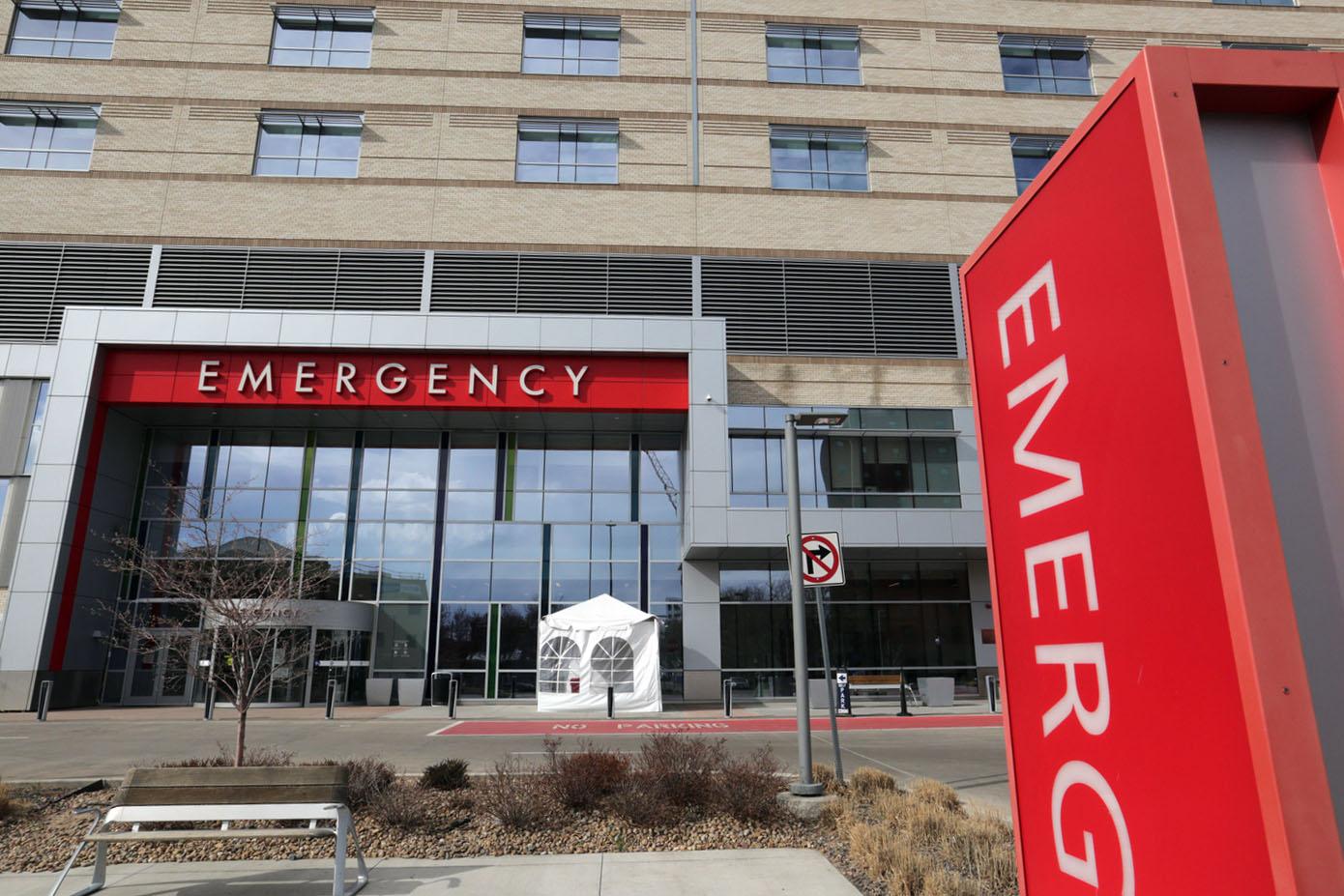
The state’s top pandemic response board, the Governor's Expert Emergency Epidemic Response Committee (GEEERC), met on short notice Monday, with only one item on the agenda: amending the rules for hospitals, known as “crisis standards of care,” to help them deal with an ongoing coronavirus surge.
“Grim,” is the word to describe the situation inside Colorado’s hospitals, said Dr. Steve Cantrill, a committee member and emergency medicine physician at Denver Health, in an interview before Monday’s meeting. “We thought we would be in a better place,” this fall, after more people got vaccinated, he said. “We’re really worried.”
The amended hospital crisis standards of care aim to spell out more clearly how a hospital can and should handle times when the sheer number of patients, and the severity of care they need, outstrip available resources.
“If we can decompress the hospital system by 10 percent, I mean, that would be a boon to our nurses and respiratory therapists and physicians and other healthcare workers,” said Dr. Anuj Mehta, a pulmonary care physician with Denver Health, who helped draft the new document. The new rules will help “so we can take care of the other patients in the hospital better and likely improve survival for everybody.”
The original crisis guidance for hospitals was developed in spring 2020, as the pandemic was just beginning, and focused on things in short supply, like ventilators. Since then the crisis has evolved and so has the need to change the guidance for hospitals.
Now, hospitals are dealing with a crush of both COVID-19 patients and those needing other care, in many cases because patients delayed getting care during earlier parts of the pandemic. Hospitals face this high demand while simultaneously grappling with a severe shortage of staff.
The revised standards are essentially a reboot, with guidelines to manage patient loads and make room by moving lower risk patients out of the hospital to other settings, or home, where they can still get outpatient care, or be readmitted if needed.
The GEEERC’s new recommendations come as Colorado’s COVID-19 numbers showed some signs of improvement in new data released Monday. The state reported 1,473 confirmed COVID-19 patients in hospitals. That was a drop of 103 from six days earlier and down 34 from the day before. The seven-day test positivity rate on Sunday was 9 percent, down a point from about three weeks ago. But this is still well above the 5 percent threshold that signals trouble.
"We've seen case rates start to stabilize, as well as hospitalizations,” state health department Director Jill Hunsaker Ryan told the GEEERC meeting.
Still, doctors and public health experts caution that with many Coloradans mixing over the Thanksgiving holiday, and overall vaccination numbers in the mid-60 percent range statewide, the potential for a post-holiday spike is clear.
“Everyone is struggling just with COVID patients, non COVID patients, just the sheer number of patients,” said Dr. Barbara Statland, a hospitalist at Denver Health who worked on the revised crisis standards. “That's the challenge that COVID patients bring is that they take up a bed for maybe a prolonged period of time.”
The staffing crunch means hospitals and their frontline providers are simply doing more with less. “It's one person taking care of more patients with less resources and we're seeing that across the system,” said Mehta.
The board’s recommended changes will go to the governor to authorize, and the state’s chief medical officer, Dr. Eric France, would activate them before they take effect.
It made sense to get the standards revised now, with COVID-19 hospitalizations still high going into the holidays, he said.. “We have them now in our back pocket,” France said.
The board’s proposed changes may affect how hospitals serve patients with serious health issues, whether they are COVID related or not. For example: How would a hospital treat a diabetic patient with ketoacidosis, a serious complication when the body produces high levels of blood acids, during a COVID-19 surge? Normally, “It’s an ICU care case, but when the ICU is full, what are you going to do?” said Cantrill.
He said under the revised standards, serious cases would still be cared for in the ICU, but a more mild case would go to a regular hospital ward.
The changes deal with “triage in and out of the hospital,” and coping with a rising number of patients during acute staff shortages, he said.
“We're running into problems with dialysis in terms of finding enough staff to administer dialysis, transfers and a whole host of other issues,” said Mehta, in an interview before the meeting.
He offered an example about how providers might adjust to treat patients needing out-patient dialysis under the updated guidelines for hospitals. Typically a dialysis patient, who is not hospitalized, would come to a facility for three four-hour sessions each week. But under the new guidelines, that could be reduced to three hour sessions so the hospital “can accommodate more patients with reduced staff.”
“We’re still going to be providing care,” Cantrill said. But patients should expect longer wait times, both beforeand after a patient is admitted. And nurses might be caring for more patients than they normally would, or than they were trained for.
When the pandemic first hit in April of 2020, public health and community leaders took the unprecedented step to recommend the state prepare to suspend normal hospital decision-making protocols in favor of what are called “crisis standards of care.”
The guidelines set out how to make the most urgent medical decisions, as the COVID-19 crisis overwhelmed hospitals, and resources got scarce. Those standards would help determine who gets care and at what level.
In the early months of the crisis, the standards were activated when there was a shortage of personal protective equipment (PPE). It was lifted in June 2020.
Staffing is the big crunch this fall, with high patient numbers and many providers retiring or quitting. On November 9, the state activated crisis standards of care for staffing.
That gave hospitals greater latitude to deal with staff shortages, illnesses, workload and burnout. It allowed for workers to be moved to care for a sicker level of patient than they normally would while also giving hospitals and doctors emergency protection from liability.
But until now, Colorado has never activated its hospital crisis standards of care. Doing so would be a signal the crisis is worsening with no immediate end in sight.









